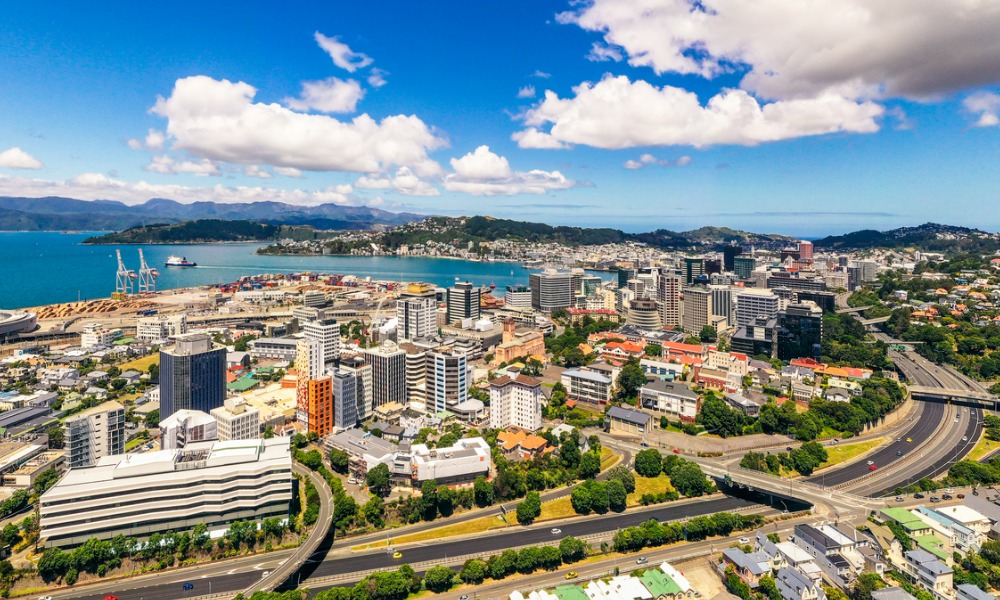The most affordable average house price on this list is $705,000

New Zealand house prices are expected to continue cooling by roughly 1% each month until 2023, according to ANZ’s latest NZ Property Focus report. Auckland, in particular, has seen house prices rise dramatically and slow—although not enough to significantly improve affordability for first-time homebuyers and investors. House prices in Wellington and Otago are also well above an already pricy national average. Here are the top 10 areas in New Zealand with the highest house prices.
Top 10 areas with New Zealand’s highest home prices
Auckland
Over the past year, the median home price in Auckland rose substantially but is now showing signs of slowing. For the first time since October 2019, the median home price year-on-year in Auckland dropped 2.2% to just over $1.12 million. For context, the median house price nationwide is $810,000.
In Auckland, the sales count trend has decreased here over the past year, as has the days to sell median trend, especially over the last six months. Additionally, the Real Estate Institute of New Zealand’s (REINZ) House Price Index (HPI) for Auckland has been the second lowest of all regions across the country over the last year.
Bay of Plenty
A region popular for anyone who wants to escape the big city, the Bay of Plenty real estate market is flooded with homebuyers backed by equity, with investors and first-time homebuyers left out. The median home price here as of May 2022 rose 10.7% year-on-year to roughly $905,000.
The Bay of Plenty is also climbing the REINZ HPI at fifth spot with an 8.6% increase from May 2021. While home inventory has significantly increased year-on-year (by 147.7%) across the region, the Bay of Plenty will still need 10,000 new homes by 2050, when the population is expected to swell to over 90,000, according to the Rotorua District Council.
Wellington
The median price in Wellington recently jumped 1.2% year on year to $895,200. The South Wairarapa District, meanwhile, hit a whopping record median of $1.31 million, with most active homebuyers backed with equity and hoping to upsize. Since first-time homebuyers have stayed away from this pricey market, attendance at lower end open homes was lacking. The HPI for Wellington was the worst performer in all regions over the previous one, three, and 12 months.
Nelson/Marlborough/Tasman
Home price growth in Nelson, Marlborough, and Tasman has been slowing, with median prices rising 7%, 8.5%, and 1.0% to $750,000, $705,000, and $848,000 respectively. The HPI for the region has been middle of the road for the last 12 months.
Waikato
Year on year, the median house price in Waikato jumped 9.6% to roughly $800,000, with fewer first-time homebuyers and investors making up the market and more owner occupiers. Less competition fuelled by higher stock levels, fewer homebuyers, and more listings have contributed to a drop of 31.5% in sales count year-on-year. While the days to sell median has slowed over the past year, Waikato’s HPI maintains a middle-of-the-road status compared with other regions.
Hawke’s Bay
The median house price in Hawke’s Bay remained at $730,000 year-on-year. With sales counts here falling 19.5% year over year, real estate agents say first-time homebuyers and investors are having a difficult time securing funding. The days to sell median trend has been cooling significantly in recent months and the HPI for both Hawke’s Bay and nearby Gisborne was the second-worst performer recently and the fourth-worst performer over the previous year.
Northland
Despite decreases in certain areas over the summer months, the overall median home price continued to rise here like it has over the past two years. Over the past year, the sales count trend has been on the decline. The HPI was the third highest for Northland in June 2022 and the second highest over the previous year, compared with other regions.
The median house price in Northland has risen by 6% to $721,000 compared to May 2021, with the home sales count dropping by 13.8% and the days to sell rising to 13 days. Compared to the spring of 2022, the median house price was down 3.2%, the seasonally adjusted median price dropped 2.9%, and the sales count increased by 10.2%.
Otago
Home prices in the Queenstown-Lakes District have risen 41.5% year on year to reach a record median price of $1.5 million. When compared to May 2021, the median price of Wanaka increased by 74.2%, with owner occupiers emerging as the most active homebuyers in Central Otago/Lakes. New Zealanders who want to buy holiday homes are also returning to this region. The House Price Index for Otago was the second strongest performer for all regions in the summer of 2022, the third strongest performer in the spring, and the fourth strongest performer over the past year.
Why are house prices so high in New Zealand?
While house prices have been slowing in recent months, home prices in New Zealand have been increasing steadily over the last 20 years. Compared to the median house price of $170,000 in the year 2000, the median house price in July 2022 was a jaw-dropping $810,000. A recent report by the Housing Technical Working Group—which focused on the Hamilton and Waikato area—found that the tax system, land restrictions, and declining global interest rates combined to drive house prices so high.
While less impactful, population growth and construction costs were also contributing factors, the report found housing supply and rent prices did not impact the value of urban land as much as changes to the tax system.



